Science meets Shoes. Go behind the scene and find out what we do to our objects before they can go on display.
This is the tale of the two Lucias, Lucia the research assistant and Lucia the scientist: together we reveal aspects of our job related to the forthcoming exhibition “Shoes – Pleasure and Pain”. Below we take turns explaining some of the things that have happened in the past few years leading up to the opening of the ‘Shoes’ exhibition.
Lucia the Scientist
When it was announced that the V&A was going to have an exhibition focussed on shoes, I assumed – very wrongly, as it turned out – there would be very little need for my services as a scientist. After all, why would any of the V&A people organising the exhibition need to have any of the shoes analysed? Shoes are just shoes, right? But it was not long before several pairs of shoes and boots made their way into my lab. The objects in the first batch were all from the 20th century and were characterised by a silvery finish, from kinky boots to dainty, elegant 1930s ladies’ shoes (Figure 1): Joanne Hackett, the conservator in charge with their treatment needed to know whether any actual silver was present. It was not.
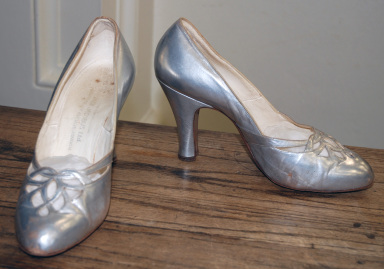
Pair of leather shoes, made by Jack Jacobus Ltd., Great Britain, about 1930.
Worn and given by Her Majesty Queen Elizabeth, the Queen Mother.
V&A: T.474: 1 &2-1997
Lucia the Research Assistant
Of course, they would need to know that: the conservation treatment would be different depending on what metal is present on the shoes; besides, this is the type of information that is very useful to a curator too, as it adds to our understanding of the object. Questions such as “When was it made? For what purpose? Who commissioned it?” can be more easily answered thanks to material analysis and technical examination. For example, there are synthetic materials which were invented at a specific time and were not available before that date. The use of a specific material would be the prerogative of a particular group of people, giving us essential information on the commission of an object.
Lucia the Scientist
A few months later new, more exotic-looking pairs started to arrive in the Science Section for analysis. Most were from India or the Middle-East, and they did look very expensive and precious. One pair looked particularly elaborate and lavishly decorated (see Figure 2).
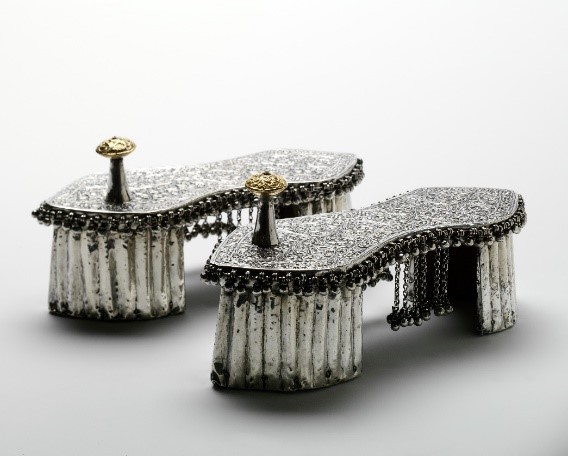
Women’s Paduka, 1800–1900, India.
Silver, gold, gilded copper and wood.
V&A: Loan: Calam.2:1&2
Lucia the Research Assistant
Do you refer to the toe knobs and the bells that adorn this footwear? These shoes are called Paduka and they are indeed precious. Thanks to your analysis, we could confirm that they are made of costly silver. This type of object was often gifted to Indian brides. Their height would help the bride to be elevated, stand out in a crowd and be easily spotted.
Lucia the Scientist
What really stood out for me though was one Egyptian sandal. Aside from the sheer age of them (two millennia!), it was so beautiful and elegant and delicate. It was brought to me before it was subjected to essential conservation treatment, and I was asked to find out if there was any trace of gold anywhere on it (Figure 3, the sandal before and after treatment).
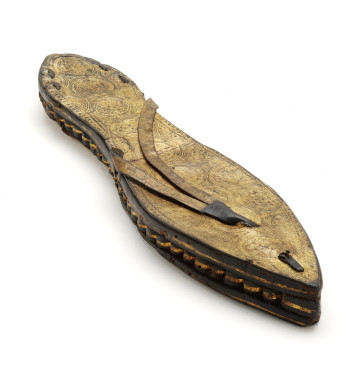
Gold sandal (before and after conservation), About 30 BC–AD 300, Egypt.
Leather, gold leaf and plant fibre.
V&A: 7-1888
When I looked at the surface of the sandal under a microscope, it did show a slightly glittery surface (Figure 4): I reverently analysed them with my trusted XRF machine, and found out that gold was indeed present! I passed the information to Katy Smith, the conservator who was taking care of the sandal. She devised the best treatment for it and, armed with the information I had provided, she proceeded to clean the sandal and restore much of its former glory.
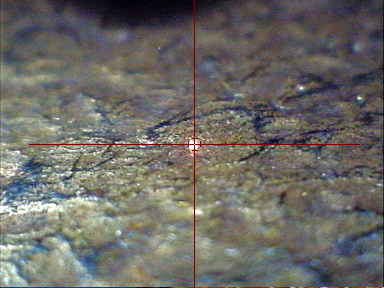
The golden surface of the sandal viewed with the microscope inbuilt in the XRF machine. The laser in the center of the cross hairs shows the exact spot analysed, which is 0.2 mm across
Lucia the Research Assistant
Knowing that this sandal dated to the late Pharaonic or early Roman Egypt and that it had been embellished with nearly pure gold gives us important information about the wearer’s status. I say ‘wearer’ and not simply ‘owner’ because there are signs that this sandal had been actually worn and was not made only for decorative or ceremonial purposes. Apart from the luxury of the material, what also struck us about this sandal was the narrow and geometrical outline of the sole that creates an idealized foot shape that does not relate with the physical foot shape. Not much has changed since, if we think about the pointed shoe we obstinately continue to wear nowadays!
As with many other exhibitions in the past, ‘Shoes’ was no exception: even for us who have worked behind the scene for many years and have daily contact with the objects in the V&A collection, surprising facts were always around the corner, and it feels very nice to be able to share them with the public and add them to the body of knowledge already in our possession.



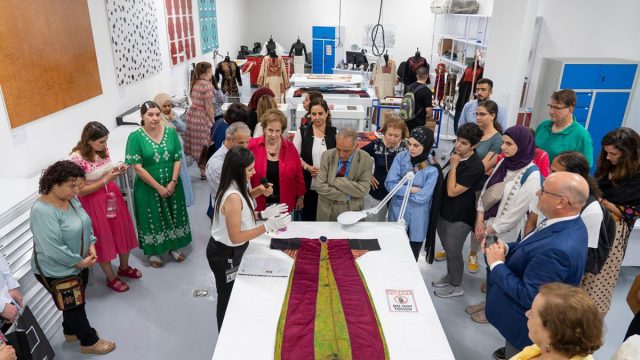
I would really be interested in locating someone that specializes in painting restoration in Chicago. I have several pieces needing work.